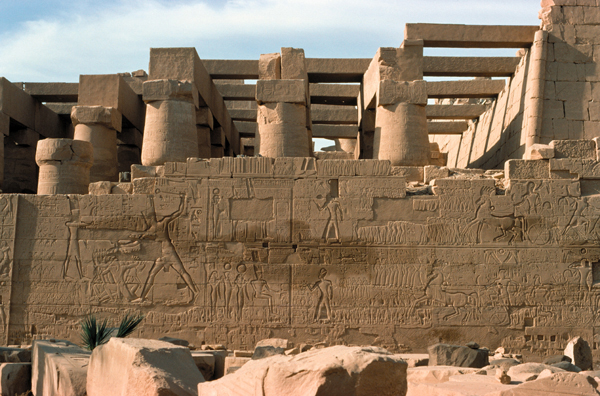Image Details

Erich Lessing/Art Resource, NY
Records of slavery. Pharaoh Seti I (1294–1279 B.C.E.) and his grandson Ramesses II (1279–1212 B.C.E.) chronicled their war victories over the Hittites (lower register), Libyans (upper register) and Shasu-Bedouin (identified by some as proto-Israelites) in reliefs carved into the walls of the Temple of Amun at Karnak.
At far left in the relief, a larger-than life figure of pharaoh is shown in combat. At right, the pharaohs appear twice, riding in chariots while rows of prisoners march before them. The Egyptian term for such foreign captives translates as “bound for life.”
Pharaoh Ramesses III (1186–1154 B.C.E.) also marched prisoners from the Levant back to Egypt to serve as slaves, as is recorded in the longest extant Egyptian papyrus (see detail of Egyptian papyrus). Now owned by the British Museum, the 133-foot, 117-column text is named Papyrus Harris I after the collector who purchased it.
Of the Canaanites, the papyrus states: “I have brought back in great numbers those that my sword has spared, with their hands tied behind their backs before my horses.”
